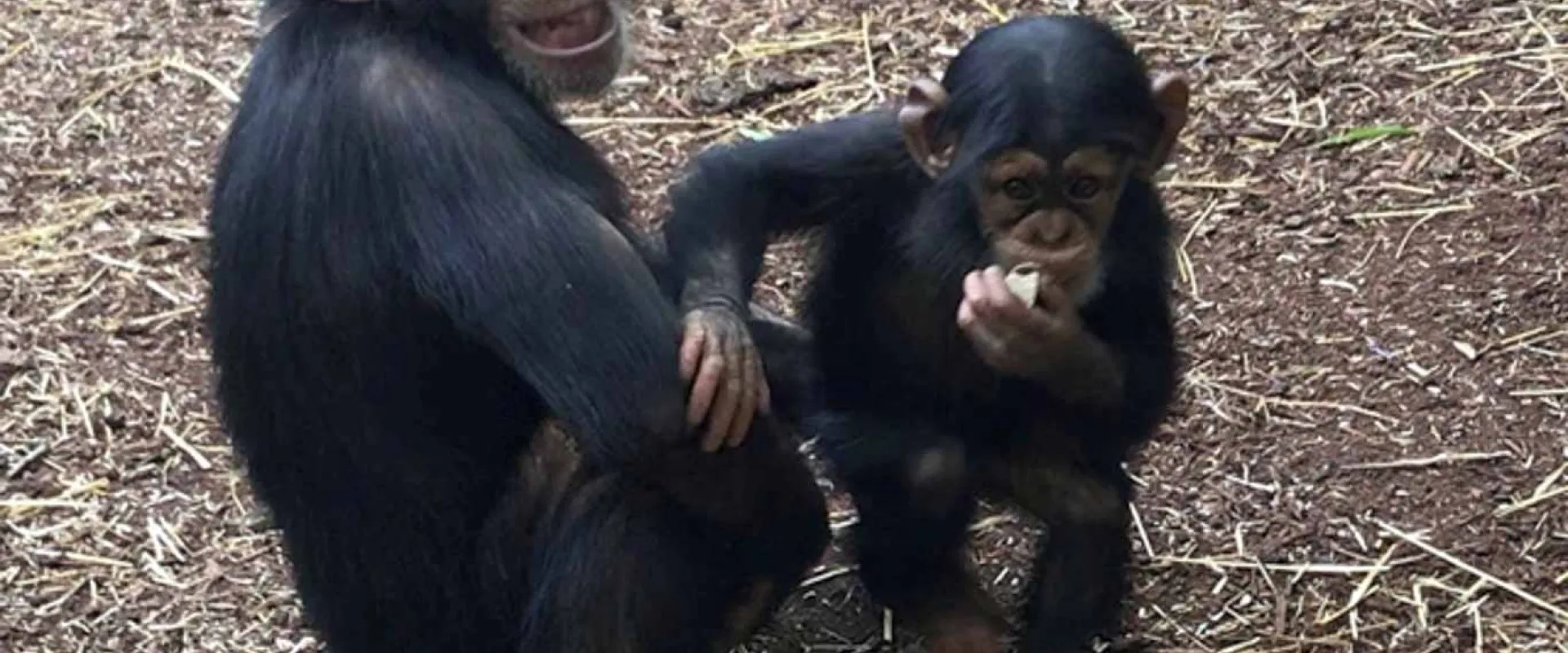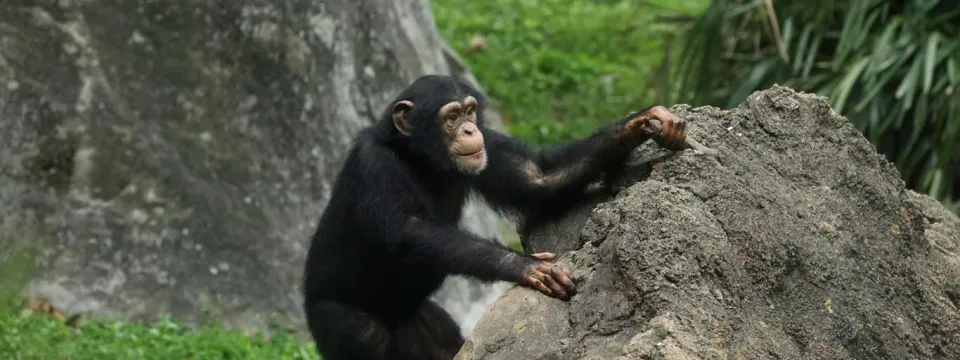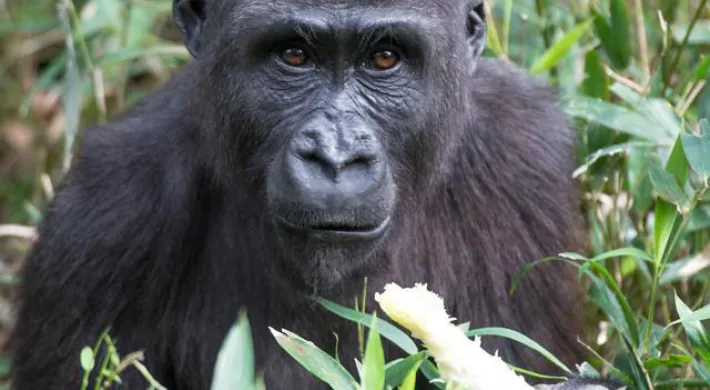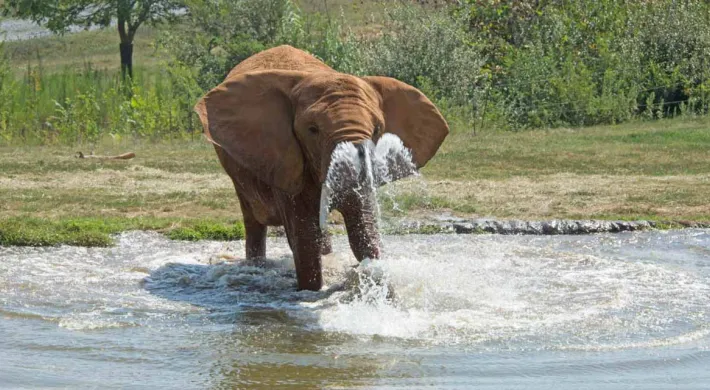Written by Emily Lynch, PhD, Associate Curator of Research, North Carolina Zoo
Can you tell the difference between a human and a banana? This seems like a silly question, but our ability to categorize our world is more sophisticated than you might imagine. Because we humans are extremely social and interact with one another consistently throughout our day, we have adapted a complex suite of cognitive skills to distinguish between the social and non-social world (such as the difference between a human—a potential friend and ally---and a food). The same general idea can be applied to other animal species: their intelligence will be adapted to provide more information on aspects of their world that are important for their day-to-day existence.
A follow-up question to asking if you understand the difference between a human and a banana (hopefully the answer was yes) is: do we share this penchant for social intelligence with any other living organisms? The best place to look to understand the evolution of our cognition would be our closest living relative, the chimpanzee. Chimps, like us, are highly social and spend a large amount of their time interacting with one another, cultivating friendships and alliances, and exhibiting behaviors that we can relate to as humans (Figure 1). It is therefore possible that they, like us are better at processing social, rather than non-social, information. In addition, because we share a relatively recent common ancestor (which could be as recent as 4 million years ago!) with chimpanzees, along with almost 99% of our DNA, they are an extremely valuable model species to examine when we ask questions about our own evolutionary history.

Figure 1: Just like you would see between two human friends, Tammy seeks comfort from Kendall through close touching and hugging.
So, how do we explore a chimpanzee’s mental world, and assess how and if they can tell the difference between another chimp and a banana? In other words, is there an adaptive bias towards processing social versus non-social information?
Dr. Chris Krupenye and Dr. Brian Hare from Duke University designed a simple but effective research project to answer this question, working with our chimpanzees here at the North Carolina Zoo. Krupenye relied on a valuable piece of technology many primatologists use when trying to understand the mental world of non-humans: a touch screen! He created a chimp-focused touch screen system where the chimpanzees could interact with a software program, using a large laptop placed on a cart. The cart could be easily wheeled into a back area where our chimpanzees could access, as needed.
Three of our most curious chimps, Nori, Ruby, and Jonathan, were trained to work with the touch screen.The process was entirely voluntary but these three were always interested in participating! Experiments like these, which involve interacting and learning something new, are always fun for the chimps and enrich their daily lives. Quickly, the chimps realized that when they touch images on the screen, they can receive a food reward through an automated feeder (apples were the treat of choice!). Once the chimps were comfortable interacting with the touchscreen, it was time to learn about how they see the world.
To assess if chimps approach social and non-social information differently, Krupenye designed the program to test their ability to infer relationships of a hierarchy (or the ability to keep track of ordered information , i.e. where one item is “greater” than another). A chimp was presented with two pictures at a time: a set of unfamiliar chimp faces (representing social information) and a set of unfamiliar fruits (ecologically valid, non-social information). The chimps were only given a food reward when they consistently selected the “higher ranking” image, based on a hierarchy created by the researchers. In this way, they learned the hierarchy of images for fruit and for chimps (Figure 2).
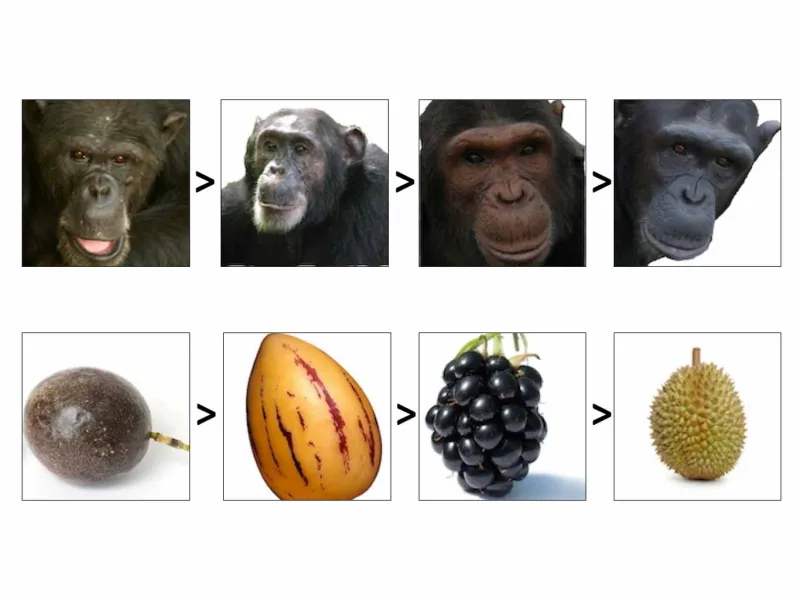
Figure 2: Example of images used in the touch screen experiment. Rank level descends from left to right. The chimps were trained on two images at a time, without being taught the relationship across sets.
Once the chimps mastered a general hierarchy of images, the real test began: can they infer relationships between images they were explicitly trained in? For example, during training sessions, they were taught that an image of a chimp named Carol was higher ranking (or more likely to be associated with a food treat) than an image of a chimp named Susanne. Similarly, the chimps were taught that the image of Susanne was higher ranking than the image of a chimp named Dianne. If the chimps are able to infer social relationships, when presented with pictures of Carol and Dianne, the chimps should choose Carol (inferring she is higher ranking than Dianne, because Susanne is higher ranking than Dianne but lower ranking than Carol). Indeed, the chimps figured this out quickly, suggesting a cognitive ability to understand complex social relationships.
What is interesting, though, is that the same tasks were completed successfully with the fruit (hierarchies were created with images and the chimps were asked to infer novel relationships). Krupenye was able to conclude that the chimps were capable of such deductive reasoning for both social and non-social information; in other words, they could understand hierarchies whether they were related to social or non-social information.
Behavioral research projects with our animals such as this one are mutually beneficial for both the researchers and our animals. The scientist is able to ask important questions and we are able to learn more about our individual animals, while providing positive stimulation and engagement for the animals. Our Zoo houses many endangered and threatened species (such as the chimpanzee), so it is important to learn more about these animals under our care, while promoting their well-being and creating an environment where they can thrive. This particular experiment improved our understanding of chimpanzees in general, but also provided fun and engaging opportunities for our individual animals.
When research is carefully integrated into the mission of Zoos, wonderful things are possible!
